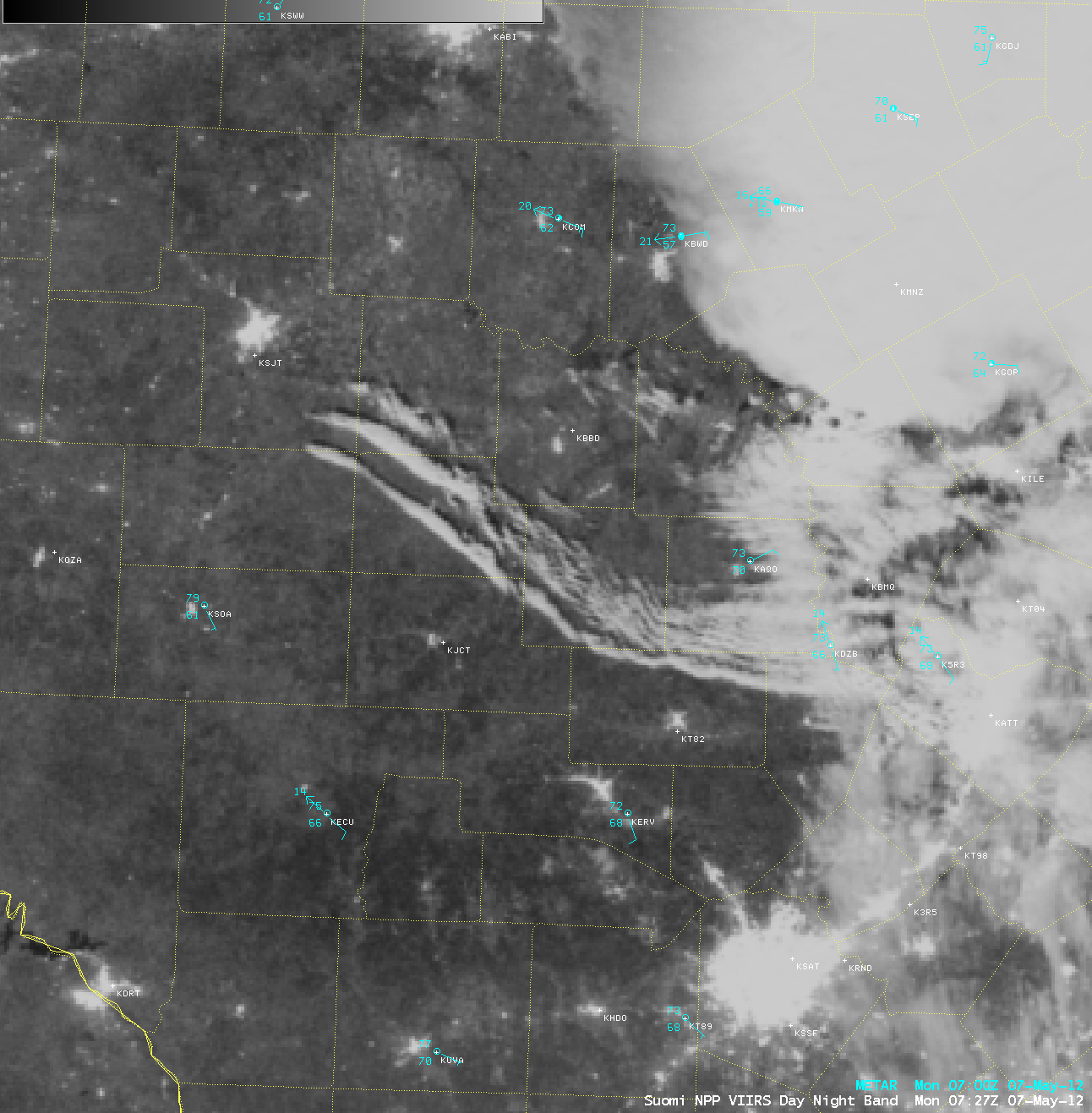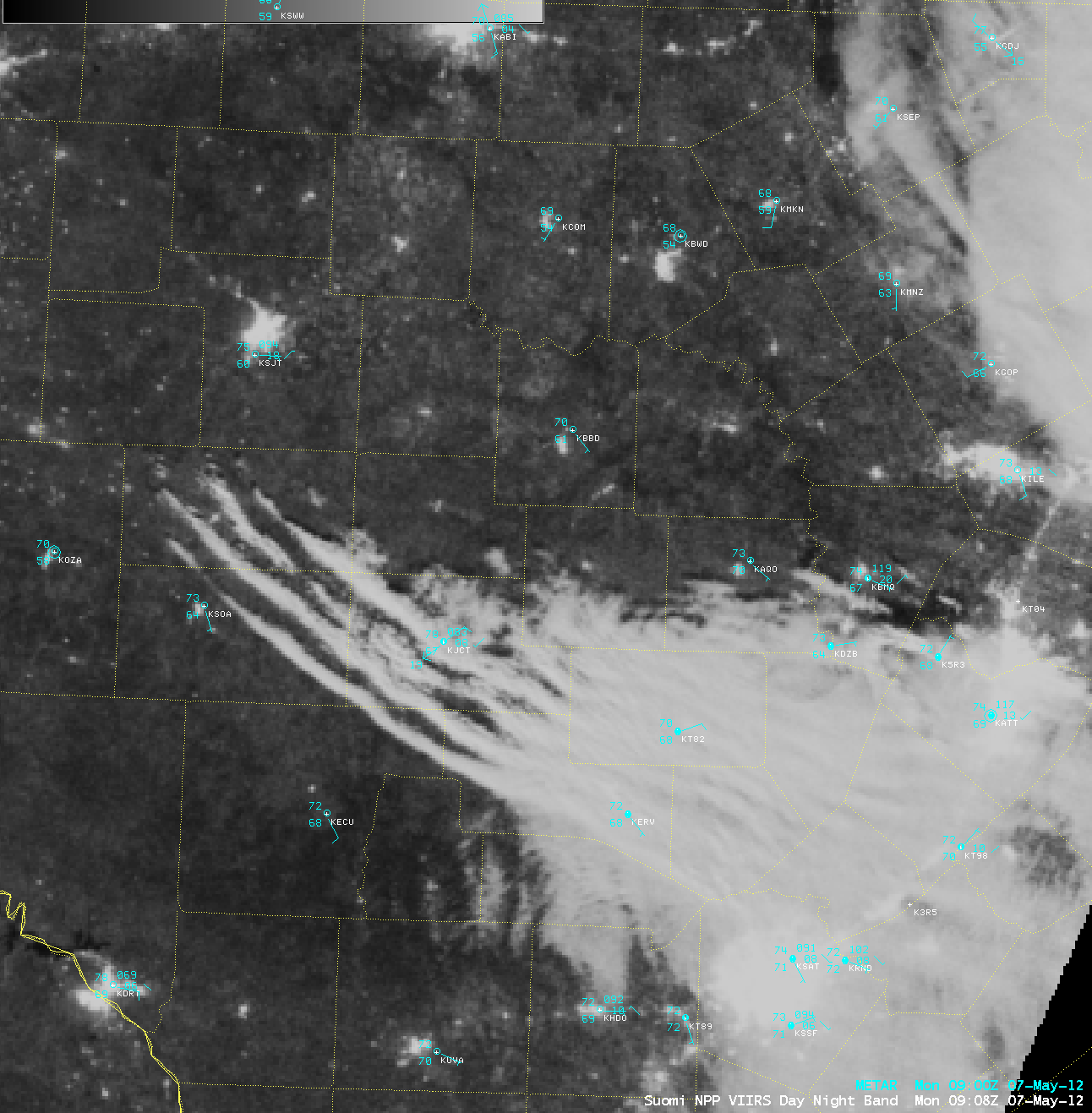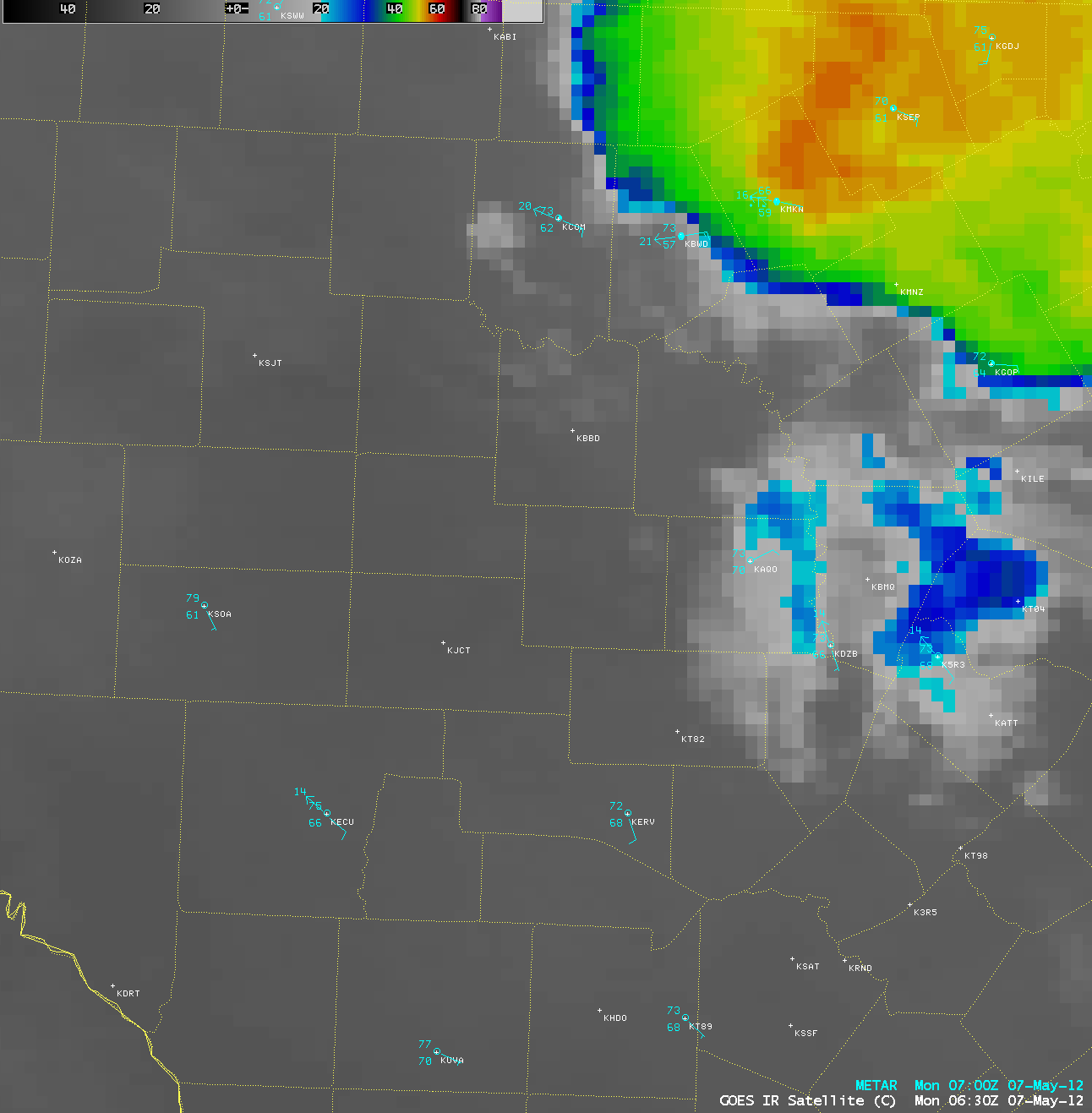Undular bore as seen using Suomi NPP VIIRS Day/Night Band imagery
A surface outflow boundary (resulting from a dissipating mesoscale convective system over southern Texas) created an undular bore that propagated southward and southwestward during the night-time hours on 07 May 2012. AWIPS comparisons of 1-km resolution Suomi NPP VIIRS 0.7 µm “Day/Night Band” images with the corresponding VIIRS 11.45 µm IR images at 07:27 UTC or 2:27 am local time (above) and also at 09:08 UTC or 4:08 am local time (below) demonstrated how the Day/Night Band imagery could be used to better visualize the individual cloud band structures of the bore. On the Day/Night Band images, cloud features could be seen due to moonlight illumination, and bright areas of city lights were also very prominent.
This undular bore could also be seen on 4-km resolution GOES-13 10.7 µm IR images (below), although the individual cloud band features were not as well-defined due to the coarser spatial resolution. At Junction, Texas (station identifier KJCT), east-northeasterly winds gusted to 25 knots (29 mph) at 3:43 am local time as the bore passed.




